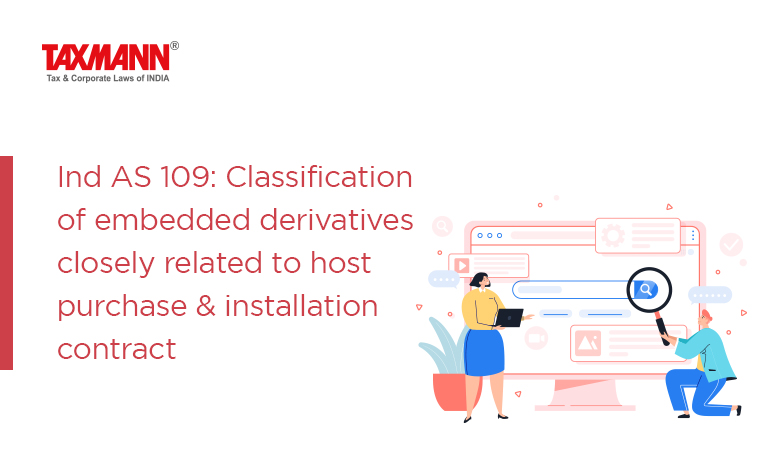Ind AS 109: Classification of embedded derivatives closely related to host purchase & installation contract
- Blog|News|Account & Audit|
- < 1 minute
- By Taxmann
- |
- Last Updated on 3 November, 2021
An embedded derivative can only be regarded as closely related to the host contract if it is denominated in a currency that is commonly used in the economic environment in which the transaction takes place, according to Ind AS 109 Financial Instruments. Furthermore, it must first assess whether the transaction is a local business transaction or an exterior trade in order to decide the currency frequently used in local business transactions or external trade. In addition, INR is a widely utilised currency in Indian contracts.
In one of such example, A Ltd. is engaged in the generation of hydro power, coal mining and oil & gas exploration, etc. The company has entered into contracts to purchase and install the power plant & equipment. The contract is denominated in both functional and foreign currency. For both contacts, the company has made the accounting for foreign currency as embedded derivatives. Whether the foreign currency embedded derivative contracts entered by the company with both the parties would be considered as closely related to the host contract?
Click Here To Read The Full Story
Disclaimer: The content/information published on the website is only for general information of the user and shall not be construed as legal advice. While the Taxmann has exercised reasonable efforts to ensure the veracity of information/content published, Taxmann shall be under no liability in any manner whatsoever for incorrect information, if any.

Taxmann Publications has a dedicated in-house Research & Editorial Team. This team consists of a team of Chartered Accountants, Company Secretaries, and Lawyers. This team works under the guidance and supervision of editor-in-chief Mr Rakesh Bhargava.
The Research and Editorial Team is responsible for developing reliable and accurate content for the readers. The team follows the six-sigma approach to achieve the benchmark of zero error in its publications and research platforms. The team ensures that the following publication guidelines are thoroughly followed while developing the content:
- The statutory material is obtained only from the authorized and reliable sources
- All the latest developments in the judicial and legislative fields are covered
- Prepare the analytical write-ups on current, controversial, and important issues to help the readers to understand the concept and its implications
- Every content published by Taxmann is complete, accurate and lucid
- All evidence-based statements are supported with proper reference to Section, Circular No., Notification No. or citations
- The golden rules of grammar, style and consistency are thoroughly followed
- Font and size that’s easy to read and remain consistent across all imprint and digital publications are applied






 CA | CS | CMA
CA | CS | CMA


